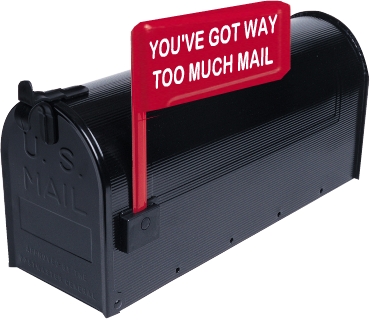Getting Ready for the New Email System
With Sheridan's new email and calendar products scheduled to land later this fall, there are steps staff can take now to prepare for the arrival of the new systems.
Delete Old, Unwanted or Unneeded Email
When it comes time migrate users to the new systems, IT will be faced with the task of migrating hundreds of users accounts and millions of messages. In order to meet the project demands it would really help us out if you could do some clean up by deleting any old, unwanted, or unneeded email.
Tips for Managing your Email
One and Done
Similar to the rules for handling paper files and correspondence, try to adopt a "one and done" handling policy for email. Try to avoid allowing email which has already been read to simply languish in your Inbox awaiting action. Make it a practice to categorize it or take immediate action such as replying. For example, most people will never go back to reference an email again after they reply to it. Often the content is also contained in the reply.
Sort to Delete
When it comes to deleting messages, sorting messages by date, subject, file size and/or attachment are very effective ways to determine what you should keep and what can be thrown away.
Quite often for messages containing attachments, we're quite likely to have a locally saved version, making the email redundant.
Another easy group of messages to target are those that have the same subject line. Quite often you only need to keep the last two or three messages as they will likely contain all of the content from that particular thread of messages.
Sorting on the "To" or "Date" fields is another easy way to group and isolate messages so you can delete them in one shot.
Delete Items in your Sent Mail Folder
The sent mail folder is another folder that is often neglected by users. Take the time to review the messages in your sent folder. In most cases, these messages can be trashed as they are typically referenced in the replies we receive from the message recipients. For the messages you send that contain attachments, most of these available on your computers hard drive, network drive (e.g. G drive), or a file share.
Empty your Trash
When you delete a message, it's not purged from the system until you empty your trash. You should set up regular times – at the end of the day or once a week – to empty the trash folder. Some users rely on the trash folder as a fail-safe to store messages they think they might need to refer to again, but in most cases these messages sit there in perpetuity, needlessly bloating user's quotas. If you think deleting a message is too severe, use folders to manage these messages. Use the trash folder for trash.
It's important to note that when the new email system is deployed, there will be automatic trash retention policies whereby users' trash folders will be emptied at regularly specified intervals.